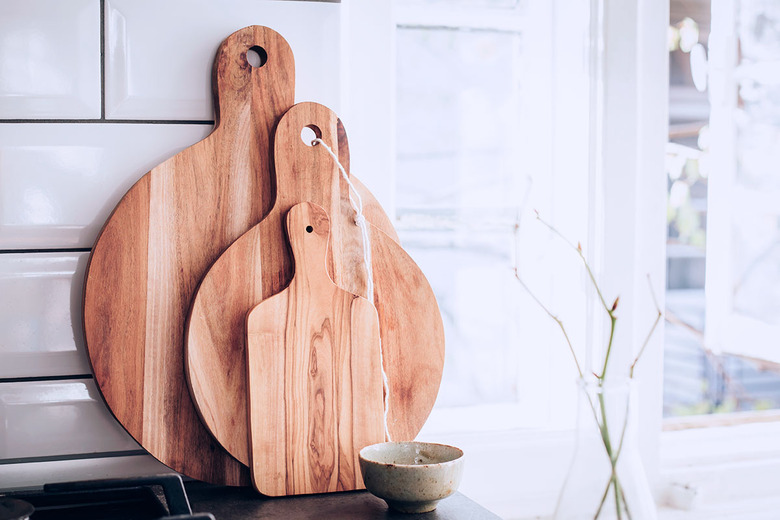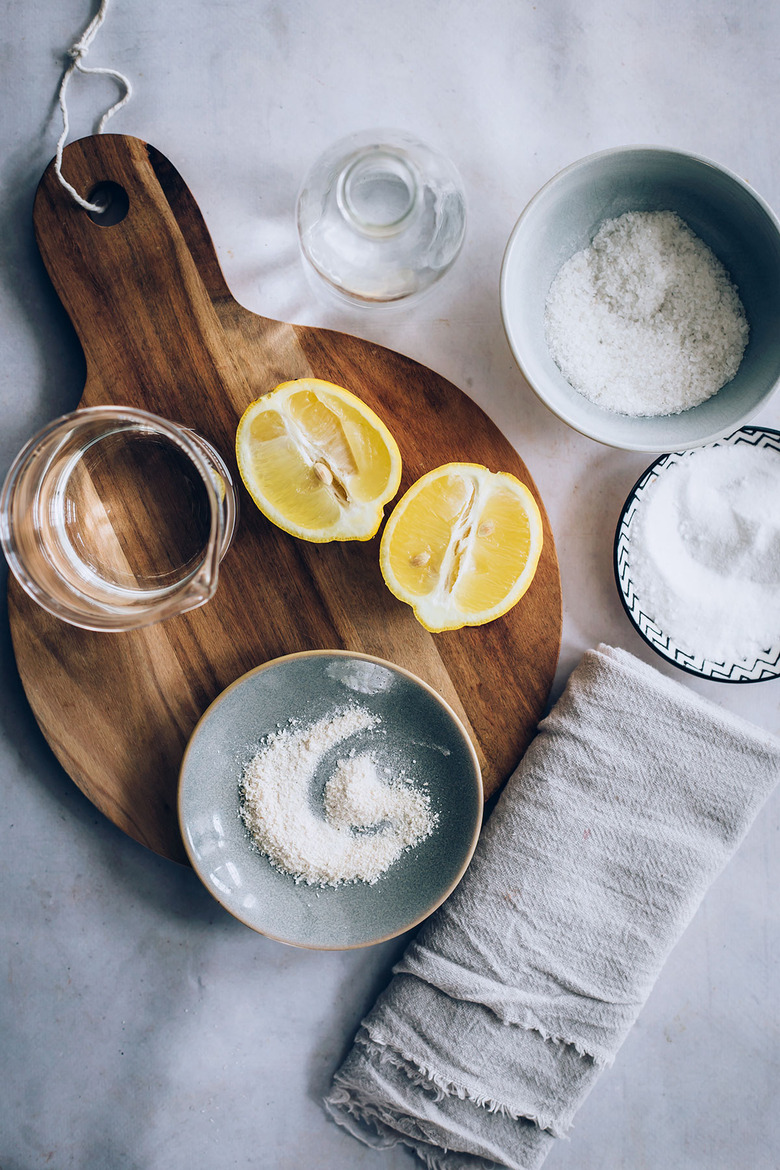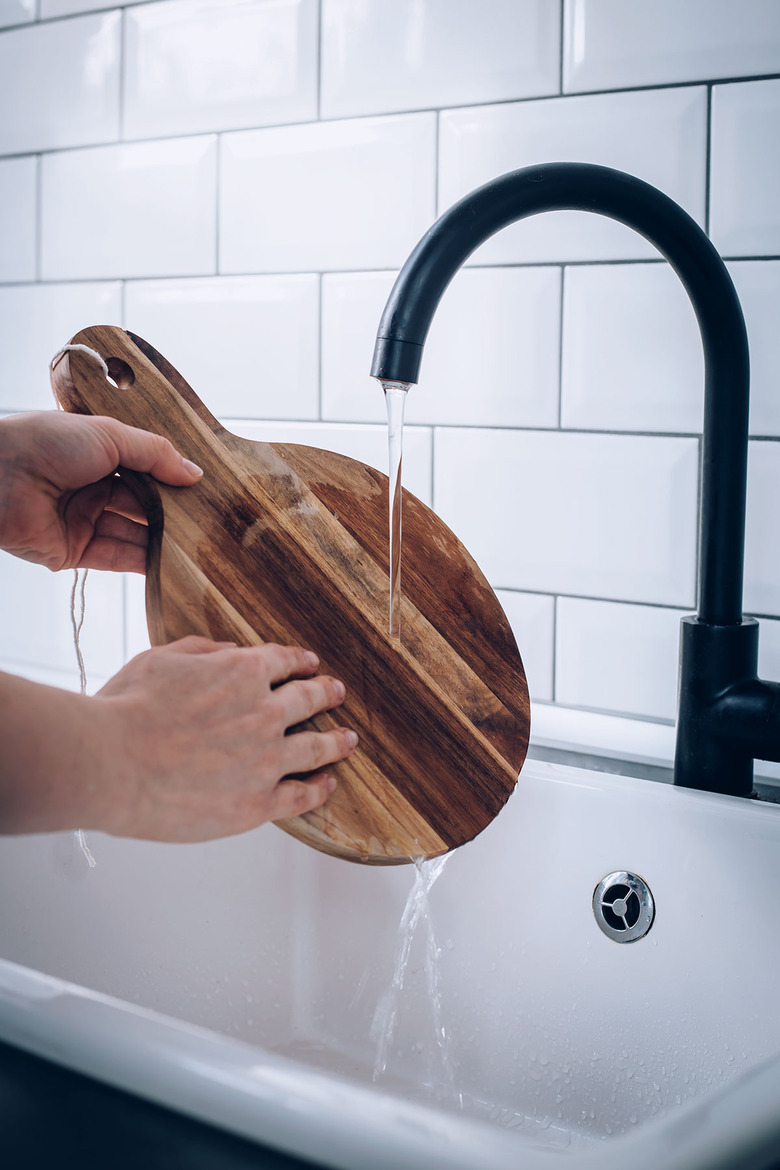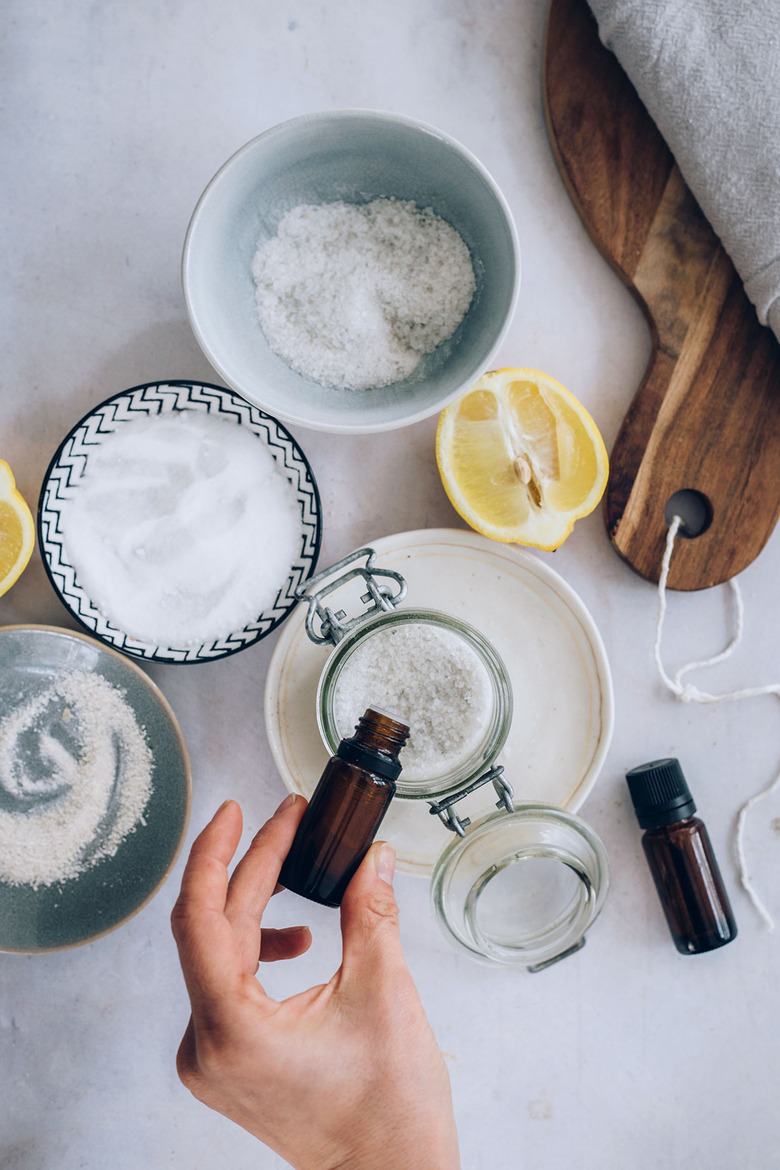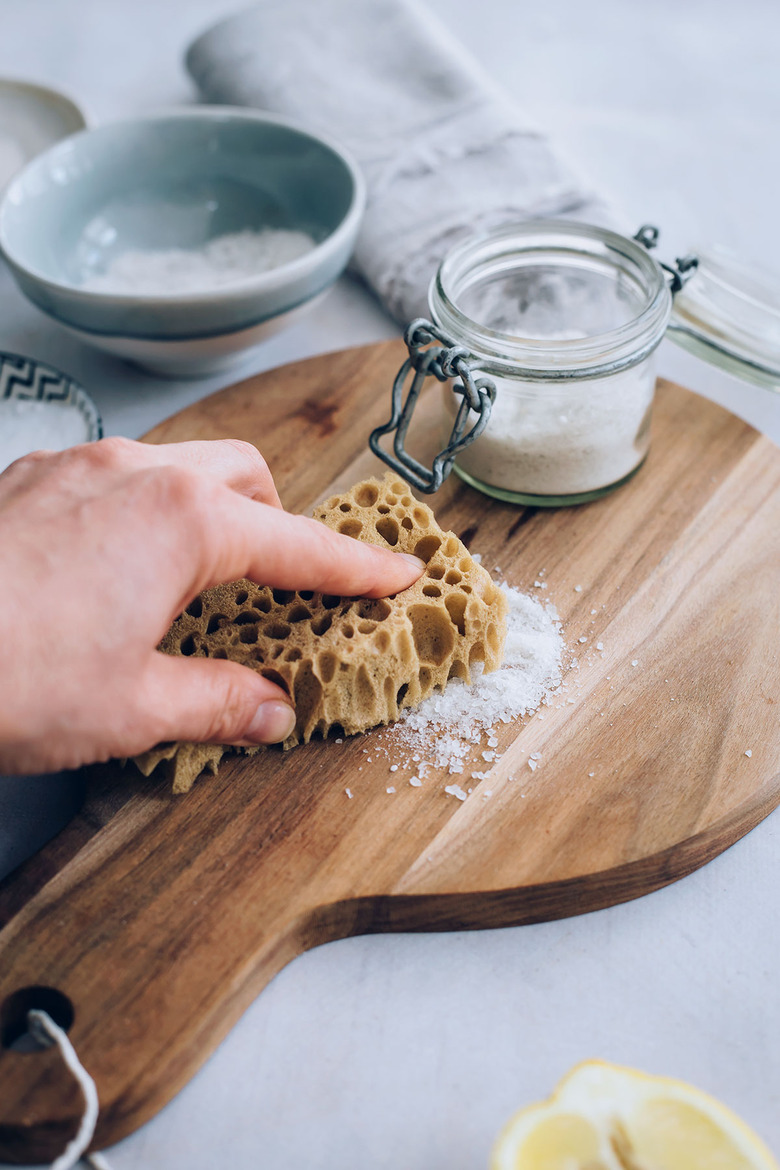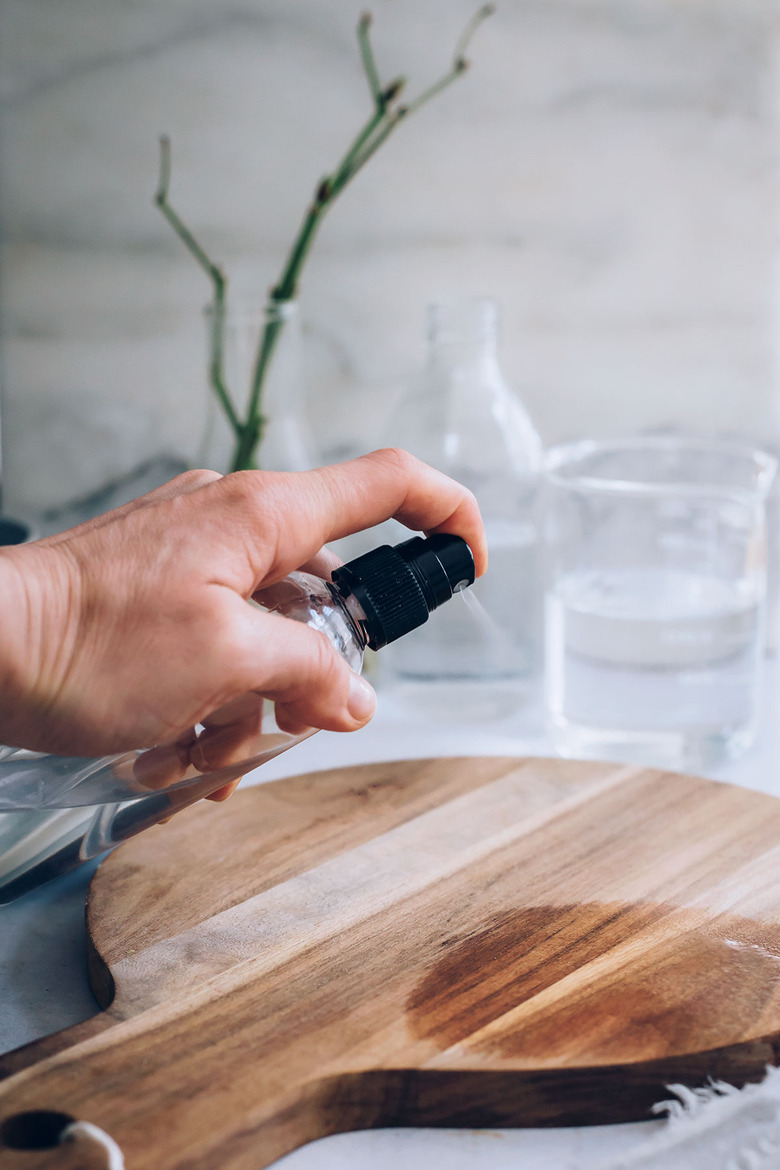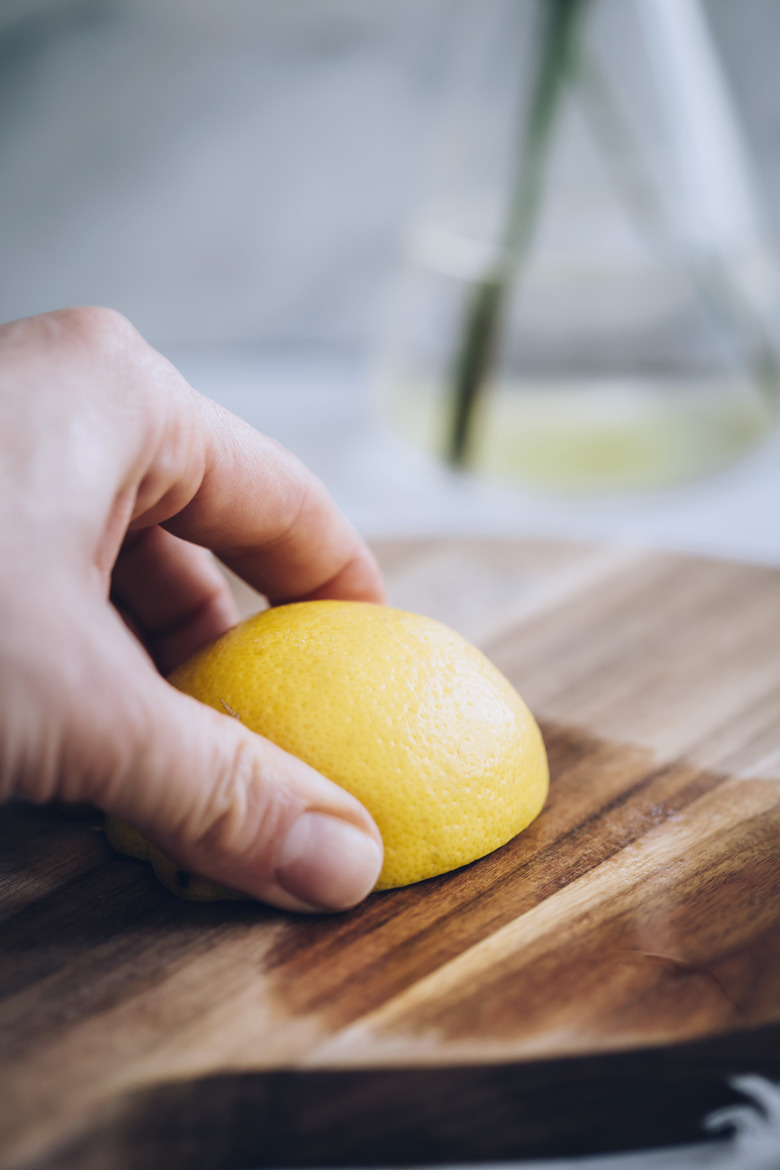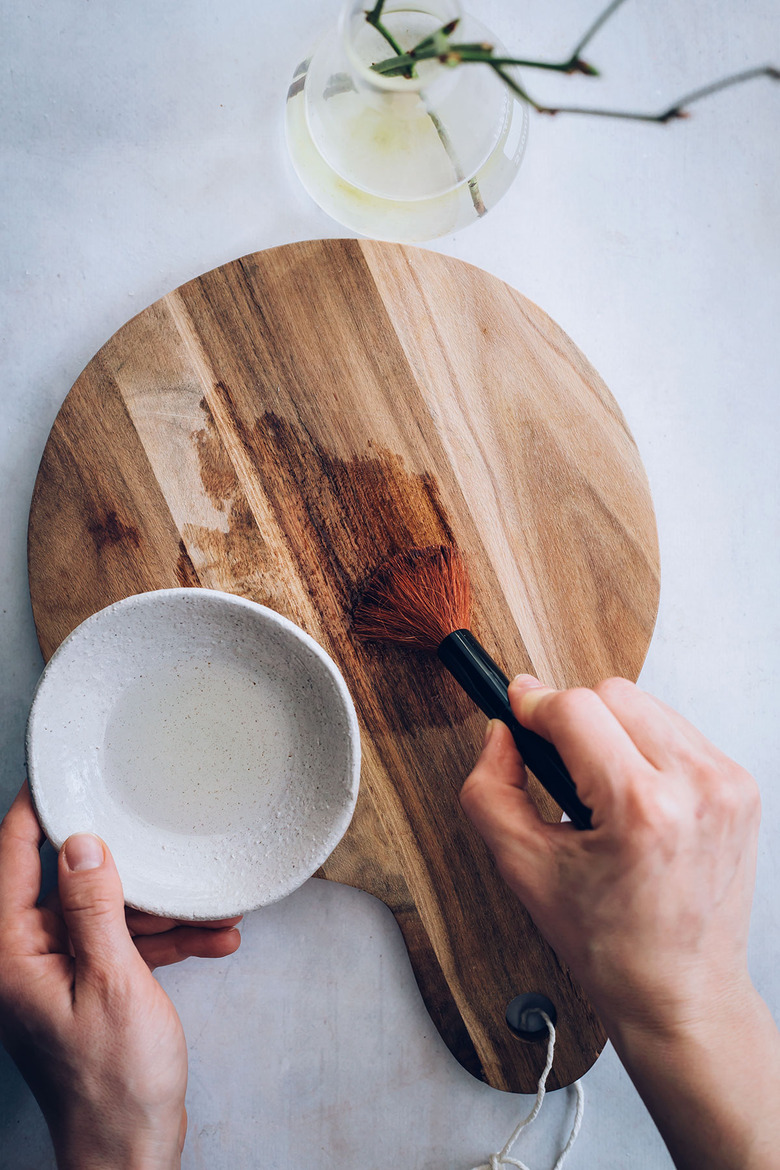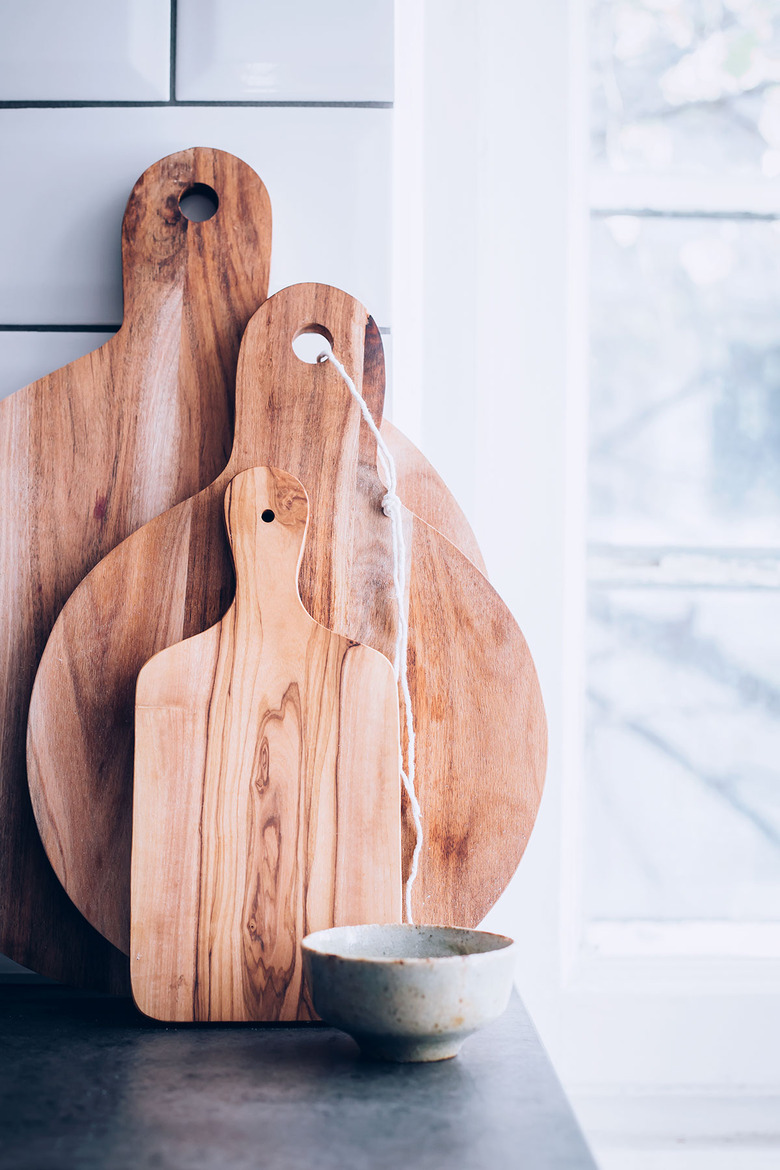You Really Need To Clean, Disinfect, And Protect Your Wood Cutting Board, So Please Follow These Steps
We may receive a commission on purchases made from links.
Cutting boards are a kitchen must-have. Wooden cutting boards don't belong in the dishwasher (seriously, please don't) so you might wonder if they truly get clean. I reserve a plastic cutting board that can go in the dishwasher for meat prep, and then cut everything from onions to sandwiches on my wooden ones.
Wood cutting boards take a daily beating so a little TLC goes a long way in keeping them in good shape. Follow these simple steps to clean, disinfect, and protect your boards. Not only will they last longer but you'll also prevent bacteria and mold from growing.
Tip
Have you seen these new wood board trends? From a "butter board" to an "everything bagel cream cheese board," wood boards are being used in a variety of new ways ... so you're going to want to make sure you clean, disinfect, and protect it properly!
_Scroll below to see where you can buy the boards featured here._
Things Needed
-
1/4-cup soap flakes
-
1/2-cup coarse salt
-
1/2-cup baking soda
-
10 drops of lemon essential oil
-
Half a lemon (optional)
-
White vinegar
-
Hydrogen peroxide
Step 1: Rinse With Water
Step 1: Rinse With Water
First, give your board a good wipe down or rinse to remove any leftover food. This is a good first step, but it's not enough to clean and disinfect cutting boards. Don't stop here in the cleaning process!
TIP: _Wooden cutting boards can soak up a lot of water, which can be a breeding ground for bacteria (and also warp your board). Rinsing with water is fine; soaking in water is not. Let the board dry out after cleaning and between uses. That means propping it up instead of leaving it flat on the counter so that every side can dry._
Step 2: Clean With a Cutting Board Scrub
Step 2: Clean With a Cutting Board Scrub
Mix up a cutting board scrub for stains, stuck on food, and funky smells. Soap flakes add power to the abrasive salt to dislodge food while baking soda helps the scrubbing paste wipe out stains and kill odors.
Lemons are one of the most cutting board-friendly ingredients. Use both the fruit and the essential oil in cutting board care. Lemon essential oil not only has a fresh, clean scent, but it's also naturally antibacterial and antiseptic to help disinfect.
Combine the dry ingredients in a jar then add the essential oil drops. Keep in a lidded container and sprinkle a small amount on a cutting board when needed. Scrub the cutting board with a sponge or the flesh side of a cut lemon.
Step 3: Disinfect With Vinegar and Hydrogen Peroxide
Step 3: Disinfect With Vinegar and Hydrogen Peroxide
After cleaning, use white vinegar and hydrogen peroxide to disinfect a cutting board. The duo is safe to use around food, kids, and gentle on wooden cutting board surfaces (unlike bleach).
Mixing and storing the two ingredients together creates peracetic acid, which can irritate the skin and lungs, so keep each ingredient in a separate spray bottle. Hydrogen peroxide breaks down when exposed to light, so use a dark container for it. The easiest solution: put a spray nozzle on the original bottle.
To disinfect, all you need to do is spray on one ingredient and then the other. Using them together is 10 times more effective against bacteria than using each ingredient on its own. You don't even need to wipe it up.
Or try using lemon. Lemons help bleach out stains and eliminate odors, and the acidic juice gets into all the nooks and crannies to disinfect. Just rub the cut side of half a lemon over the surface of the cutting board.
Step 4: Condition Monthly With Mineral Oil
Step 4: Condition Monthly With Mineral Oil
Conditioning cutting boards may seem like a pain, but it's an important step in keeping your boards clean and sanitary. Applying mineral oil or wax once a month protects the surface by filling in the wood's natural gaps and grooves. That will keep water and bacteria out — and keep your wooden cutting boards looking good!
